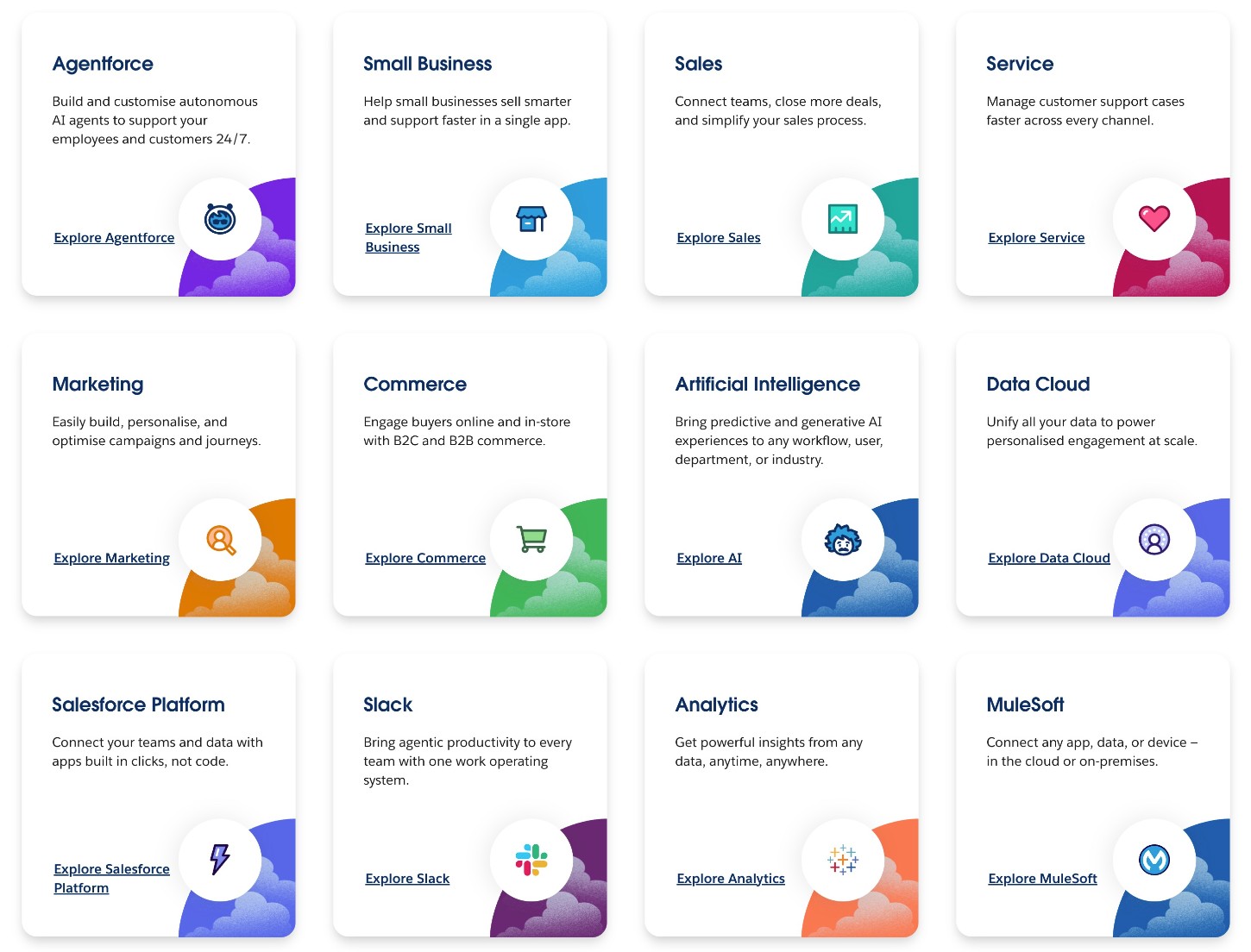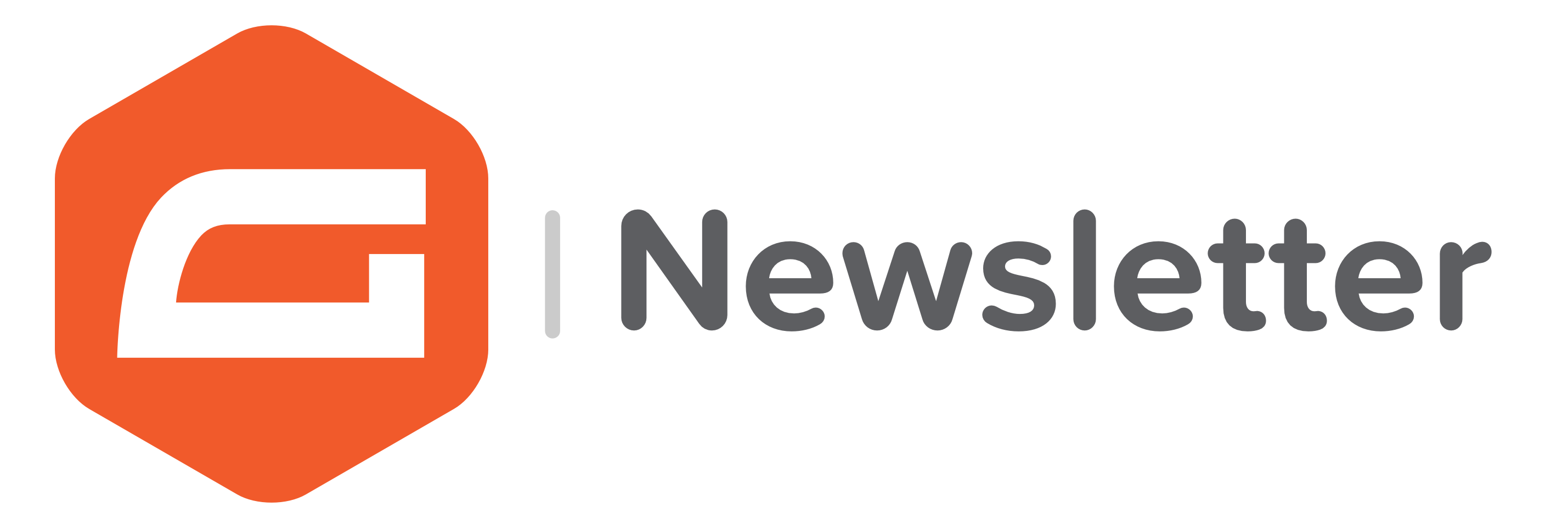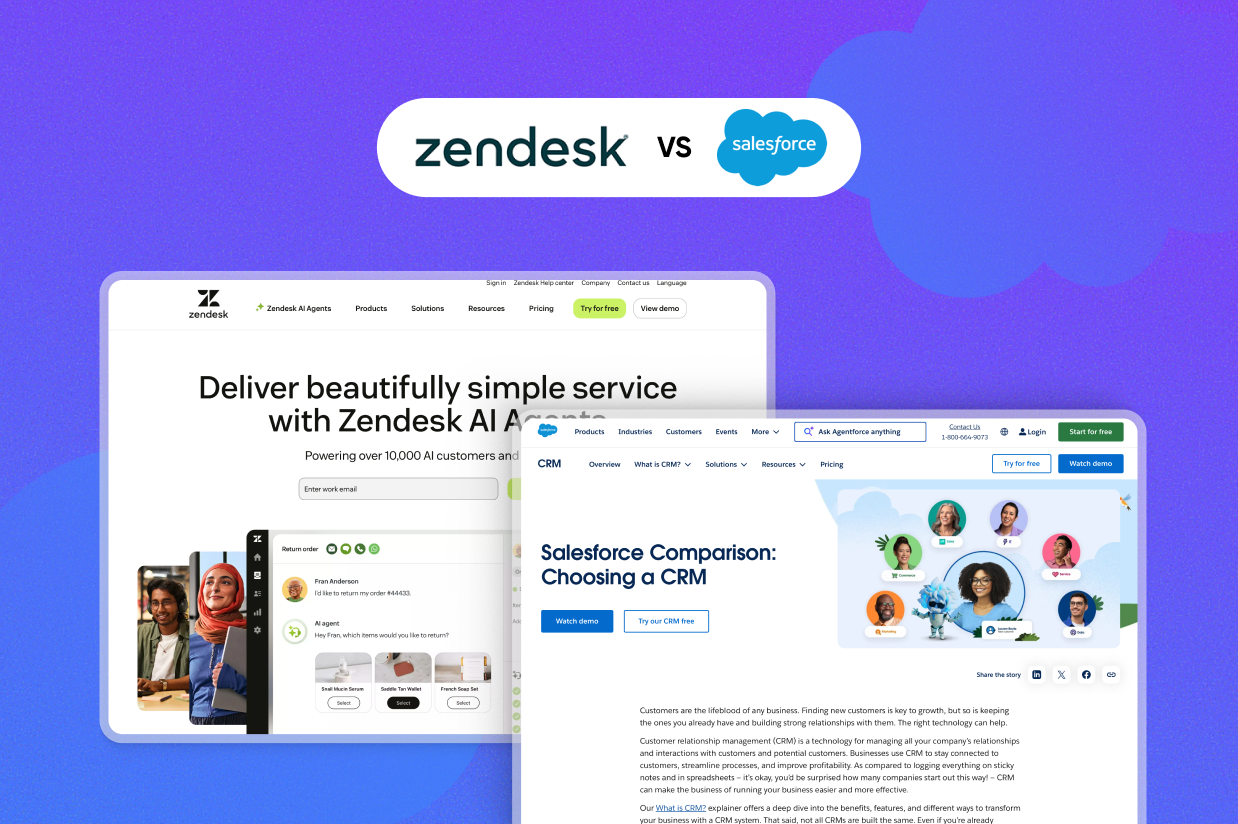Zendesk vs Salesforce: Honest comparison to help you choose
Trying to choose between Zendesk vs Salesforce for your business?
While there is some overlap between Zendesk and Salesforce, the two tools are different in some pretty important ways. Zendesk focuses on customer service, while Salesforce offers a broader scope covering sales, marketing, customer service, and more.
To make the right choice for your business, it’s essential to understand those differences, which is what we’re going to cover in this post.
In addition to helping you understand how Zendesk and Salesforce are similar and different, we’ll also cover your options for integrating these two tools into your WordPress website using the Gravity Forms plugin.
Zendesk vs Salesforce: Basic introductions and primary focuses
To start things off, let’s go through some general introductions to Zendesk and Salesforce.
Zendesk

Zendesk is best known for its customer service solutions, which are the company’s main focus in 2025 and beyond.
It offers tools for pretty much every aspect of customer service, including helpdesk/ticketing, live chat, voice/phone support, knowledge bases, and more.
Zendesk used to also have its own customer relationship manager (CRM) offering, called Zendesk Sell, which made it more of a competitor to Salesforce’s CRM. However, in September 2025, Zendesk announced that it would be exiting the CRM space in the near future, with plans to permanently shut down Zendesk Sell on August 31, 2027.
As such, the function overlap between Salesforce vs Zendesk has gotten a lot smaller.
Salesforce

Salesforce can do a lot of different things, but it’s probably best known for its CRM and marketing automation functionality.
It offers robust functionality in a variety of areas, including sales, customer service, marketing, commerce, experiences (e.g. websites), analytics, and more.
Though it does offer small business-focused plans, Salesforce is especially popular with enterprise organizations and offers a deep level of customizability.
Functionality and scope of features: What can you do with each tool?
We covered some of these differences in the previous section, but now we’ll dig into the specific scope of features that you can access with Zendesk and Salesforce in more detail.
Zendesk
As we mentioned above, Zendesk now focuses pretty much exclusively on customer service/experience functionality as of 2025 and beyond.
Zendesk offers pretty much everything that you need to run your business’s customer service efforts, including the following:
- Helpdesk – Offer helpdesk support via email or ticket.
- Customer details – View the history and context of each customer to more efficiently offer support.
- Live chat support – Offer live chat support using human or AI agents (or a mix).
- Social media support channels – Zendesk helps you offer customer support via popular social networks and messaging apps, including Facebook, X/Twitter, WhatsApp, Slack, and more.
- Phone support – It also includes tools for call routing, IVR phone trees, and more.
- AI tools – These include AI agents, generative replies, generative search in your knowledge base, and more.
- Help center/knowledgebase – You can create your own help center to offer self-service customer support.

In addition to its customer service plans, Zendesk also offers plans for internal employee service.
Salesforce
Whereas Zendesk focuses almost exclusively on customer service, Salesforce offers a much broader scope of functionality.
To let you pick and choose which features you want to use for your organization, Salesforce divides its primary offerings into different “clouds”. These clouds are mainly for enterprise use cases and are priced accordingly.
For small businesses, Salesforce offers more unified plans that offer a limited set of features covering different areas.
Here are some of the main features that Salesforce offers:
- Sales Cloud – This covers everything related to sales, including the Salesforce CRM.
- Marketing Cloud – This can handle all of your marketing efforts, including email marketing, marketing automation, social media marketing, and other areas..
- Service Cloud – This helps you offer service across multiple channels using human and/or AI agents. It’s the most one-to-one comparison with what Zendesk offers. You can also use it for employee service, similar to Zendesk’s employee service plans.
- Commerce Cloud (Unified Commerce) – This can help you manage and run your e-commerce efforts.
- Experience Cloud (formerly Community Cloud) – This lets you build Salesforce-powered websites or online experiences. For example, a customer support forum.
- Agentforce (formerly Einstein) – This covers many of Salesforce’s AI tools, which are integrated into the other clouds.

Beyond offering a broader scope of features than Zendesk, another unique detail about Salesforce is that it also offers special clouds for specific industries:
- Nonprofit Cloud
- Health Cloud
- Financial Services Cloud
- Education Cloud
- Manufacturing Cloud
- Government Cloud
All in all, Salesforce just generally does significantly “more” than Zendesk. Whether this is a positive for your situation will depend on whether you’re exclusively looking for a customer support tool, or if you want a tool that can do more than just customer support.
Pricing: What will you pay for Zendesk vs Salesforce?
Pricing differences between Zendesk and Salesforce will depend on whether you’re interested in only using Salesforce’s customer service tools or if you plan to use other parts of the Salesforce platform.
Either way, Zendesk will often end up being cheaper than Salesforce, though we encourage you to do the math for your specific situation.
Neither platform offers a free plan, but both do offer free trials that you can use to try out either service at no risk to your wallet.
In terms of the premium plans, here’s what you can expect to pay…
Zendesk pricing
Zendesk offers four plans for its customer service tools, with some additional plans for employee service. For this post, we’re going to focus on the customer service plans, though.
All of the plans are based on the number of customer support agents you’ll have working on Zendesk.
They start at $25 per agent/month with monthly billing or $19 per agent/month with annual billing for the Support Team plan.
Then, they top out at $219 per agent/month with monthly billing or $169 per agent/month with annual billing for the Suite Enterprise plan.

Salesforce pricing
Whereas Zendesk offers four preset customer service plans, Salesforce has a lot more variation within its pricing.
What you’ll pay will depend on what you’re using Salesforce for, your specific feature needs, and the number of users in your organization.
For example, whether you just want to use Salesforce for customer support via Service Cloud, or whether you want to use other features.
The cheapest option to get started with Salesforce is via its small business-focused plans, which give you access to limited but essential features across multiple areas:
- Starter Suite – Starting from $25 per month per user.
- Pro Suite – Starting from $100 per month per user.

If you need more than what the small business plans offer, you might need to purchase the standalone clouds. Here are the pricing details for some of the most common clouds:
- Marketing Cloud – From $1,500 per month per organization for Marketing Cloud Growth Edition (billed annually).
- Sales Cloud – From $165-$175 per month per user for Enterprise (billed annually).
- Service Cloud – From $175 per month per user for Enterprise (billed annually).
For example, here’s the full pricing for Salesforce Service Cloud:

With Service Cloud plans topping out at $550 per user/month, Salesforce has the potential to be significantly more expensive than Zendesk.
WordPress connections with Zendesk and Salesforce
If you’re using WordPress, the Gravity Forms plugin can help you integrate your website with both Zendesk and Salesforce. This lets you connect any form on your WordPress site to your preferred service.
Let’s go through how it works with both Salesforce and Zendesk…
Gravity Forms Salesforce integration
Gravity Forms offers its own Salesforce Add-On that lets you connect your WordPress site directly to Salesforce using the Salesforce API.
You can connect your form to any Salesforce object type, including mapping form data to custom fields in Salesforce. You can also connect a form to multiple object types and use conditional rules to control when/how to sync data.
Here’s a full rundown of some of the most notable features in the Gravity Forms Salesforce Add-On:
- Choose how to connect to Salesforce – You can use the Salesforce authorization flow when connecting to your own website. If you’re working on a client site, the add-on also supports manual connections.
- Connect to any object type – Sync form data to any Salesforce object type, including connecting to multiple object types if needed.
- Map form fields to Salesforce fields – Map data from your forms to any fields in Salesforce.
- Add conditional logic rules – To give you more control over everything, you can use custom conditional logic rules to control when/how you want to sync data to your Salesforce account.
It’s important to note, that to utilize the Gravity Forms Salesforce Add-On, your Salesforce account must have access to the Salesforce API. You can check if your Salesforce account supports the required APIs for our Gravity Forms integration by using our Salesforce Connection Verification Tool.
For more information, refer to this Salesforce developer article that outlines the license types known to provide API access. We recommend you check with your Salesforce account executive or Salesforce support if you have more questions on this.
Gravity Forms Zendesk integration
Unlike the Gravity Forms Salesforce Add-On, Gravity Forms does not offer its own official add-on for Zendesk. However, you do still have multiple options for connecting your forms to Zendesk.
First, you can use the Gravity Forms Zapier Add-On to connect your forms to Zendesk using Zapier as an intermediary. This still gives you a ton of options for customizing the connection, including letting you create new Zendesk tickets, sync custom data, and more.
We have an entire tutorial on connecting WordPress and Gravity Forms to Zendesk using Zapier.
You can also find third-party community add-ons that offer direct Gravity Forms Zendesk integrations, including the following:
Note – these add-ons have not been reviewed by the Gravity Forms team, so we encourage you to do your own due diligence before installing them on your WordPress site.
Final thoughts
In the end, choosing between Zendesk vs Salesforce really comes down to the specific needs of your business.
With the impending closure of Zendesk Sell, Zendesk has now gone back to exclusively focusing on customer experience and customer service tools. If you’re looking for a tool to handle customer service exclusively, that could make it a good option.
It offers all of the essential customer service features that most organizations need at a lower price point than what Salesforce charges.
In comparison, Salesforce offers a much more expansive scope, with tools for sales, marketing, customer service, and more. If you want one tool that can do everything (and you’re potentially willing to pay a premium for that), that could make Salesforce the better option.
Regardless of which service you choose, the Gravity Forms plugin can help you integrate everything into your WordPress website.
For Salesforce, Gravity Forms offers a dedicated Salesforce Add-On that lets you connect any form on your site directly using the Salesforce API.
For Zendesk, you can use the Gravity Forms Zapier Add-On to connect your WordPress forms to Zendesk using Zapier as an intermediary. Or, you can explore community add-ons that offer a direct connection between Gravity Forms and Zendesk.
If you want to get started, purchase your Gravity Forms license today.

If you want to keep up-to-date with what’s happening on the blog sign up for the Gravity Forms newsletter!
